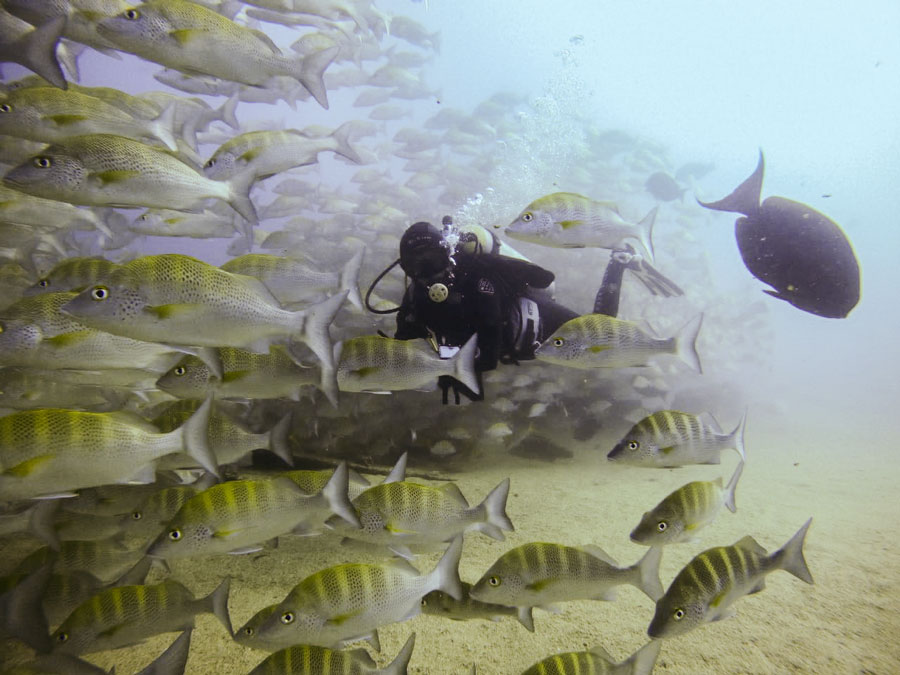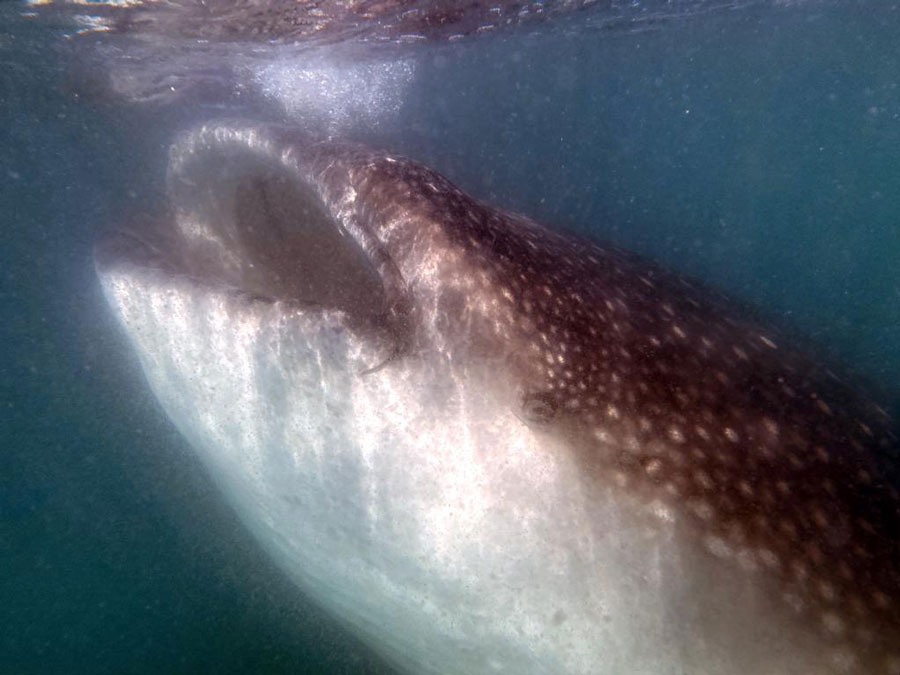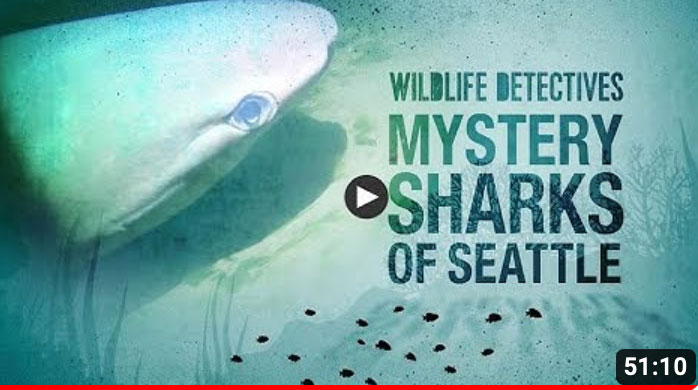Washington diving
The Puget Sound is one of my favorite dive regions in the United States, and during the summer it is sometimes possible to see sixgill sharks within recreational limits. I didn’t see one last year, but as I pulled into Seattle this summer, I hoped for the best.
Sixgill shark facts
There is still a lot of data missing from our understanding of this species, so I decided to meet up with Jeff, a passionate Pacific Northwest diver who has been directly involved in the sixgill shark research in the past.
Sixgill biology
While most shark species sport five gill slits, the Sixgill Shark boasts six, and is anatomically more similar to ancient sharks.
Fully grown Sixgill sharks are enormous. The ones you see here are juveniles, but Sixgills can grow to a staggering 18 feet in length and weigh as much as 1,300 pounds.
The Sixgill shark’s upper jaw is armed with cusps, perfectly designed for gripping prey. In contrast, the lower jaw works like a saw, efficiently slicing away at their food.
Sixgill shark behavior
These sharks feast on a diverse menu, which includes other sharks, skates, rays, large bony fish, and an assortment of invertebrates like squid, crabs, sea cucumbers, and shrimp. They are not picky eaters and have even been spotted scavenging on fallen giants of the ocean like whales. Their predators include orcas, other sharks, and of course, humans.
This species can be found in both tropical and temperate waters around the world. Although not much is known about their migratory patterns, these sharks get around. Tagged sharks from the Puget Sound have been pinged as far as Southern California. They prefer hanging out in deep water, well over 300 feet and even all the way down to 6,000 feet. Yet, they’re no strangers to shallower waters, especially females during birthing or juveniles.
Speaking of birthing… Litters of these sharks range from as few as 22 pups to over 100!
Sharks and climate change
But their main residence in deepwater doesn’t make them immune to the challenges of climate change. Changes in temperature and oxygen levels could affect their prey and migration patterns, which raises concerns about their future in the changing seas. In the waters of Washington, conservation efforts are in place, ensuring the recreational fishing of Sixgill sharks remains closed.
Shark diving in the Puget Sound
The mystery hanging around these sharks is part of the magic of seeing them in person in the Puget Sound. However, the topic of chumming typically comes hand in hand with the practice of shark diving, so let’s open the conversation.
To chum or not to chum
Chumming practices are utilized around the world for convenient and consistent shark sightings. Usually this happens with a dive shop, and the dive guide or boat crew are the ones in charge of the food. The recreational divers just follow along for the excitement. Some places will change the time, location, and type of chum to minimize creating habitualized behaviors of the sharks. One of the concerns is making sharks associate divers with food, which is obviously a safety issue. The other side is human impact on the natural food chain and keeping sharks active as apex predators in their ecosystems, which means, if a group of divers is chumming, it shouldn’t happen at such a frequency and volume of food that it changes the way sharks hunt in the local environment.
My shark diving experience
In general, I’m not interested in chummed dives. I’m much more intrigued by natural creature sightings. It makes those moments so magical because they come out of nowhere.
Which brings me back to Redondo in Seattle.
When I went on a chummed dive here, I felt a kind of way about it, but I wanted to see what divers are doing out here and open a conversation about responsible interactions with these sharks.
Of course, the chumming worked… My first glimpse of a sixgill was exciting, I won’t lie, but as I watched them eat the food that was laid out, it felt like an accident waiting to happen. There were divers everywhere and most of us had bright lights. We were crowding the sharks. I grew concerned with the situation, so I chose to stay out of the action, hovering well above the chumming site.
Concerns about chumming
Besides the horror of someone possibly getting very hurt on a dive, my biggest concern is that when a shark attack does happen, the shark is going to be blamed. Then, this species, which we still know so little about, will be at risk of being harmed as a way of ‘protecting the people,’ even though we instigated the issue in the first place by being overly present. We still have so much to learn about sharks and the ocean in general, so being mindful about our interactions in these spaces is incredibly important.
Join me on upcoming Azul Unlimited dive expeditions
See what trips are coming up. I always give my community first dibs on spots, so you can sign up for Patreon (and get trip discounts) or my email list to be the first to know about new expeditions in the future.











